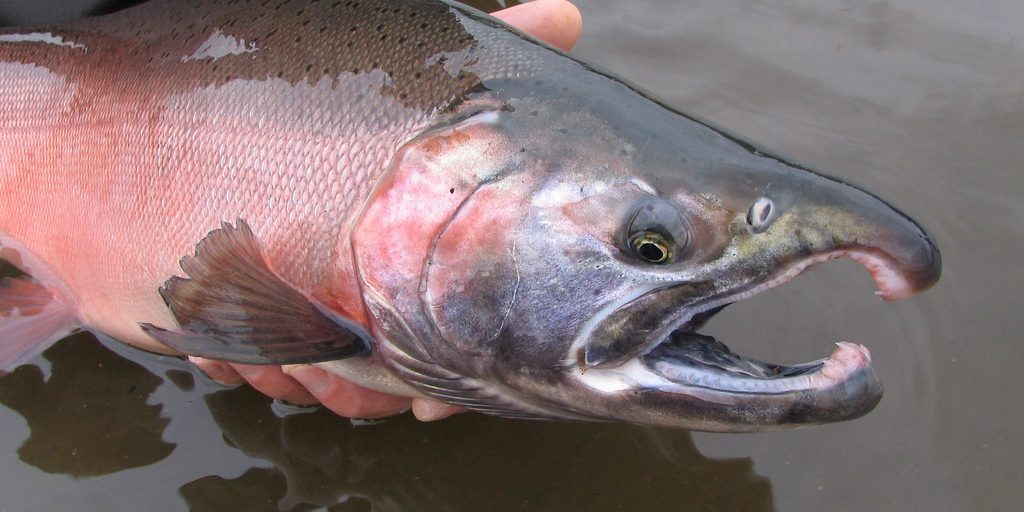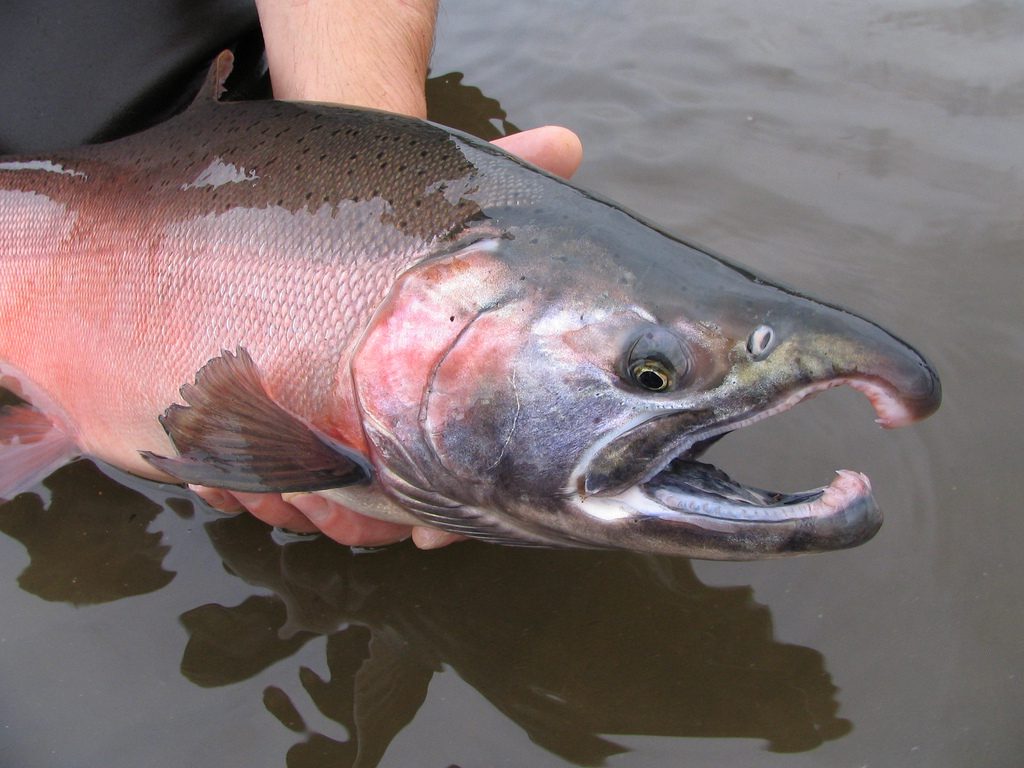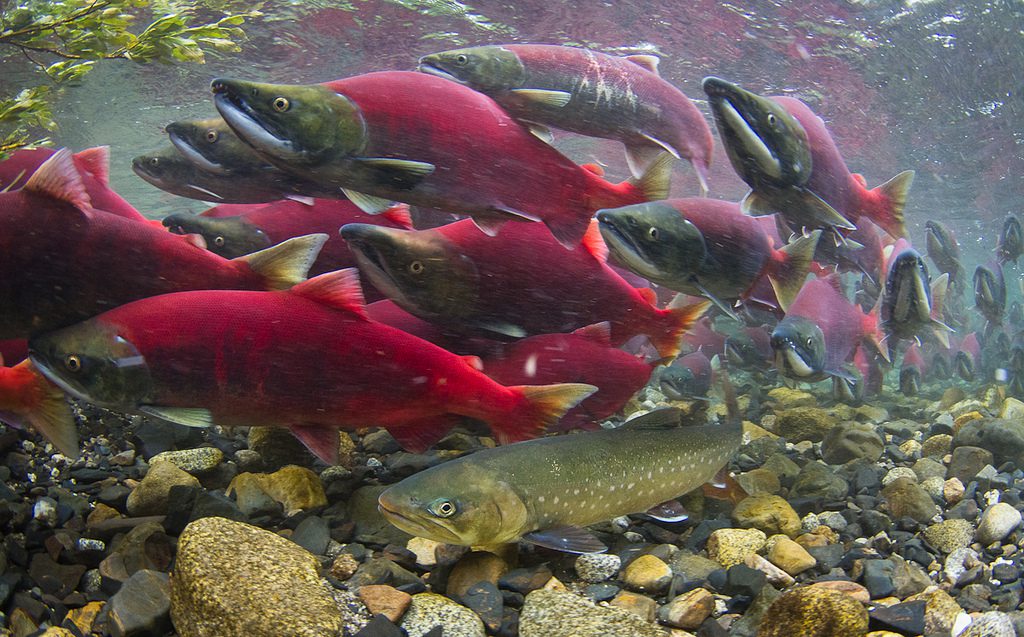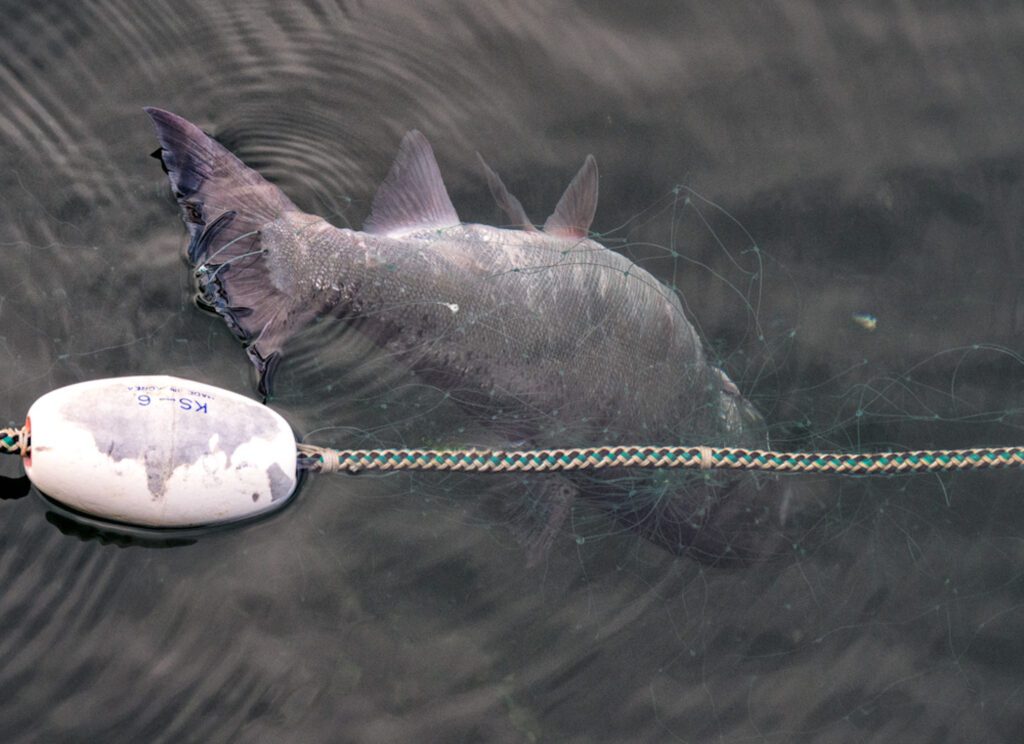Last Thursday an advisory panel on salmon bycatch heard more than an hour of public testimony—part of the ongoing debate on how to limit the number of king salmon accidentally caught by pollock fishermen at a time of unprecedented restrictions on subsistence fishing and historically low king salmon runs.
The panel makes recommendations to the governing board of the North Pacific Fisheries Management Council, which is meeting this week in Nome.
The council was told earlier in the week that, at this point in the pollock fishing season, the number of bycatch Chinooks is up from 8,237 this time last year to 11,536 so far this season.
The theme at yesterday’s testimony before the panel was one of overwhelming dissatisfaction with how managers are handling the crash in Chinook.
“We are subsistence people,” said Mary Katchiak of Holy Cross, standing as she addressed the panel. “Is that a nice story I have to tell my grandchildren? So they can tell their children how the state of Alaska stepped in and just depleted every little hope I had for my family? What are you going to give me for that? You think you’re going to compensate me? It’d take your lifetime to do that.”
Austin Ahmasuk is the Sitnasuak Native Corporation’s land manager and told the advisory panel the jargon-heavy discussions on fish management keeps the public from meaningfully participating.
“The disparity in the council’s actions and the testimony that we give, or we provide—it seems as though there is not a holistic or cumulative effect, or impact analysis, or even just environmental justice,” Ahmasuk said.
And Tim Smith of Nome framed the administrative policies as favoring the interests of industry at a time when subsistence users on the Yukon are limited to six-foot dip nets.
“This is unbelievable to me. But if you’re fishing with a three-hundred foot trawler there’s no restrictions. You can do anything you want. Take 60,000 kings out. And let’s face it, you’re fishing for king salmon. It’s called ‘bycatch,’ but that’s what you’re fishing for, king salmon and Pollock, it’s a mixed-stock fishery,” Smith said.
The last member of the public to speak was George Hutchins, a commercial pollock trawler, who says the industry is being scapegoated over Chinook bycatch, even though the science isn’t there to prove it’s at fault for depleting the runs.
“I don’t believe that there’s one single answer. You could outlaw pollock fishing tomorrow, and it’s not going to bring back your salmon. You could outlaw it for 20 years and it’s not going to help.”
Many members of the advisory panel agreed. During discussion of action items the board was split. One amendment aimed to lower bycatch numbers, and tie the upper limits with reports on the number of Chinooks. The competing measure took a more moderate approach, increasing incentives to avoid chum bycatch, but it didn’t touch policy on Chinooks.
John Gruver introduced the chum avoidance measure. He and other members speaking on it’s behalf say bycatch reductions are a premature strategy to address declines in Western Alaska salmon stocks. And he says the pollock industry has already been compliant respecting current bycatch limits.
Panel Chair Becca Gisclair voted for the lower bycatch targets, saying it’s inexcusable for thousands of incidental fish to be removed from the water when take limits across western Alaska are effectively zero.
“We’re at a point where every Chinook literally counts,” Gisclair told the panel ahead of voting.
Ultimately members voted 11-8 in favor of the more moderate chum measure, which will go before the full council for a vote this morning.







